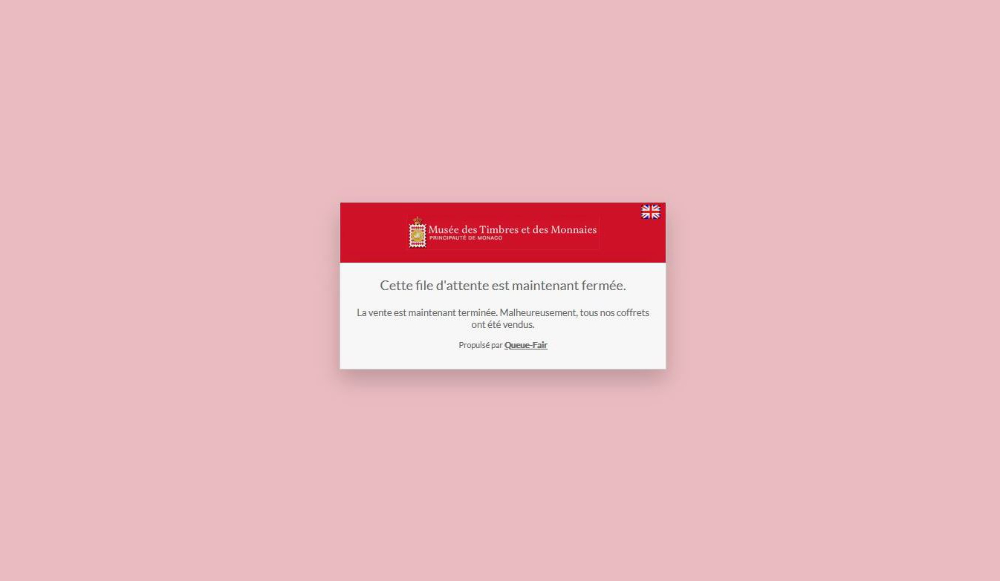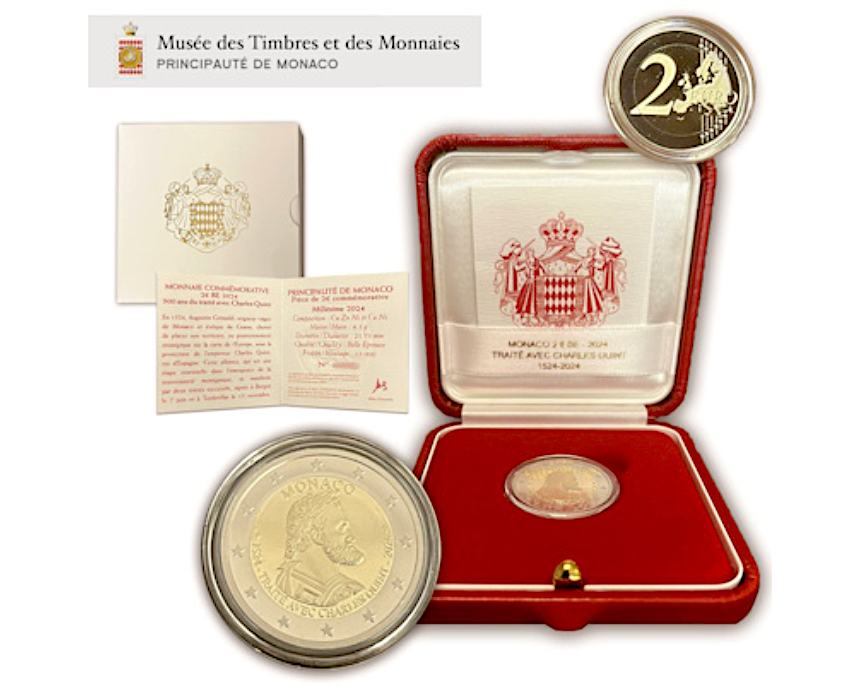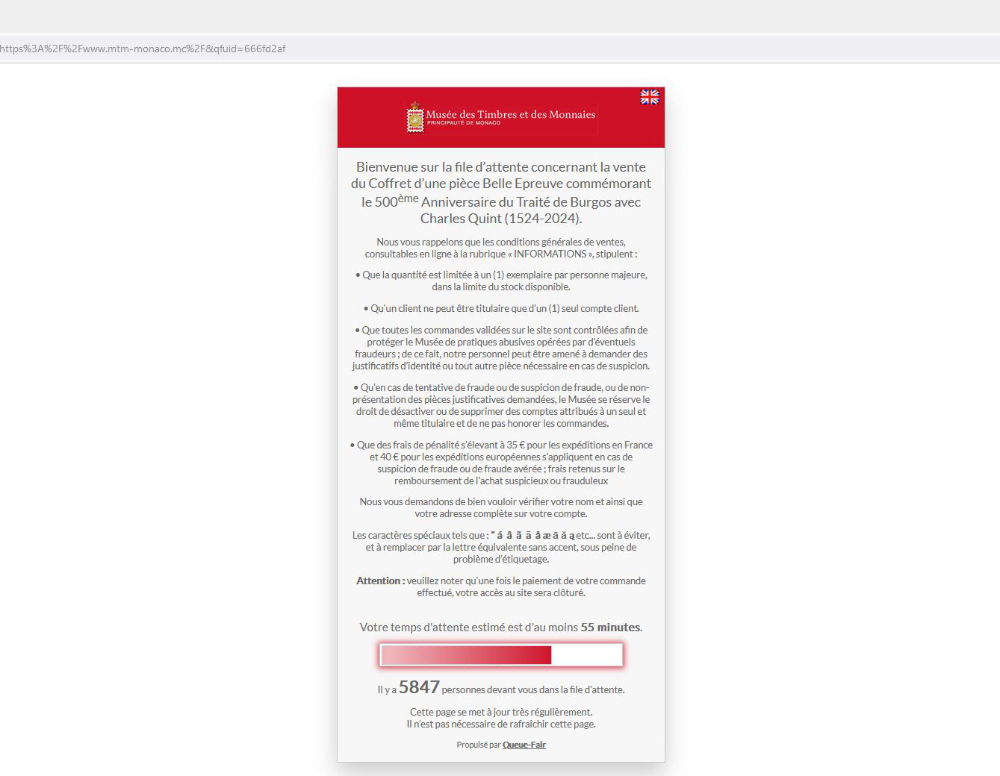A Coveted 2-Euro Coin: Monaco Introduces Penalty Fee for Multiple Orders
by Sebastian Wieschowski
Collecting 2-euro coins is usually a fairly relaxed hobby. Most new issues can be found in circulation sooner or later, or can be bought at a small premium from a local coin dealer. But once a year, everything is different – and tens of thousands of 2-euro collectors rush to the website of a small stamp museum.
Content
The Musée des Timbres et des Monnaies on the Terrasses de Fontvieille has the honourable task of distributing Monaco’s new 2-euro commemorative coins. And this task is quite a challenge. After all, only 15,000 proof specimens of the coveted Monégasque 2-euro pieces will be issued – no specimens of standard circulation quality are produced. This means that all those who aspire to have a complete euro collection need to get their hands on one of these pieces.
In recent years, the annual online sale has developed into a veritable rush, with many passionate collectors trying to purchase the pieces. By now, an increasing amount of them are driven by financial rather than collecting purposes – after all, the coins’ value usually skyrockets shortly after they are released. For example, Monaco’s 2023 2-euro coin for the 100th birthday of Prince Rainier III was offered for 170 euros (shipping included) and reached a market value of 400 to 500 euros shortly after the initial sale. After about three hours, all available coins were completely sold out.

An early morning shock: Just in time for the start of the sale, the Musée des Timbres et des Monnaies announced that the coins were sold out – but soon after, potential buyers breathed a sigh of relief as the sale began as planned.
In recent years, the Musée des Timbres et des Monnaies has repeatedly upgraded its security measures to ensure a smooth sale. After a server crash, a digital queuing system was introduced. But some buyers found a loophole in the first version of the system and managed to place several orders at once. Last year, it seemed like all loopholes had been filled – but once again collectors surprised the museum. It was reported that there was massive abuse of the system in 2023, and orders for many coins were cancelled although honest buyers would certainly have been pleased about such a purchase.
Penalty Fees for Suspicious Multiple Orders
This year, however, there was a surprise regarding the launch on 17 June, as stated in the small print of the purchasing agreement. Those waiting in the queue were reminded of the rules of the Monégasque coin lottery. These rules allow only one purchase “per adult” and each customer is only allowed to have one account. As was the case last year, the shop said that all orders placed on the website were checked to “protect the museum from abusive practices by potential fraudsters. For this reason, our staff may need to request proof of identity or other necessary documentation in case of suspected fraud.” The museum also announced that in the event of attempted fraud, suspected fraud or failure to provide the required evidence, all accounts associated with the owner would be deactivated or deleted, and orders would not be processed.
So far so good. These rules had already been in place in previous years – but multiple customers had no need to worry. The price of the coin was deducted from their account, but they were refunded a few weeks later. In 2024, however, the Musée des Timbres et des Monnaies was forced to take drastic measures: From now on, “in case of any attempted fraud and/or proven fraud regarding the uniqueness of the order” a penalty fee of 35 euros for shipments to France and 40 euros for shipments to Europe will be withheld from the refund that the potential fraudster will receive.
Smooth Sales Thanks to a Digital Queuing System
The sale on 17 June went smoothly, without any major problems. However, the museum shocked waiting collectors when the queue was to be opened: at 10 am sharp, a message popped up stating that the coin was sold out. But this was just an error and shortly afterwards the sale started as planned. Around 4 pm, the first collectors – who were keeping each other up to date in online forums – stated that the coin was sold out. And apart form a few disappointed comments, the vast majority seemed to be satisfied with how the sale went.
Fight Against Fraud – Or an Arbitrary Decision?
And yet, questions remain. Especially regarding the penalty fee for alleged fraud. After all, it is completely up to the museum’s discretion to decide whether someone violated the museum’s rules, which limit purchases to one specimen “per adult” and allow only one account per customer. If there are mass orders by customers who use made-up personal information, this is indeed a violation of the museum’s general standard terms and conditions – although it would be up for a court to decide whether this qualifies as fraud under private or criminal law. I doubt that any collector will go through the trouble of suing the museum for their money – but if they do, the museum is certainly on thin legal ice.
After all, as some Musée des Timbres customers have described in online forums, there have been strange cases of cancellations in previous years. For example, the orders of a father and a son, who are registered at the same address but have separate apartments, were cancelled by the museum. Even when the two presented their IDs, the museum did not change its mind as they were using a shared WLAN and therefore had an identical IP address. And what will the museum decide if a collector “lends” his credit card number to a friend, and the credit card then appears twice in the Musée des Timbres’ data, although the two purchasers have different names and addresses? Last year, such orders were cancelled too.
Thus, the sale had a strange taste. And friends of Monaco’s 2-euro coins will probably have to hope and see in the coming weeks whether their order will be penalised as a potential case of fraud. There is also growing dissatisfaction with the Principality’s issuing policy in online discussions. If you are assigned a number around 9,000 in the digital queue and the coin has a mintage of 15,000 pieces, but you do not get to purchase the coin, the question arises as to what proportion of the total mintage is actually being offered. And how many coins will subsequently come onto the market via the coin trade as a result of orders being cancelled by the museum.






